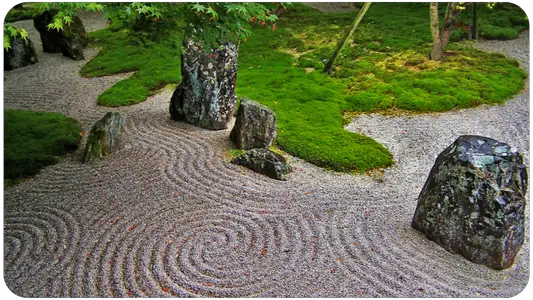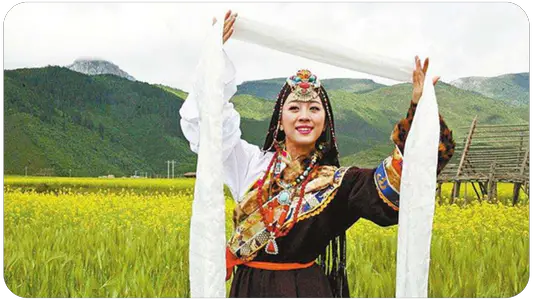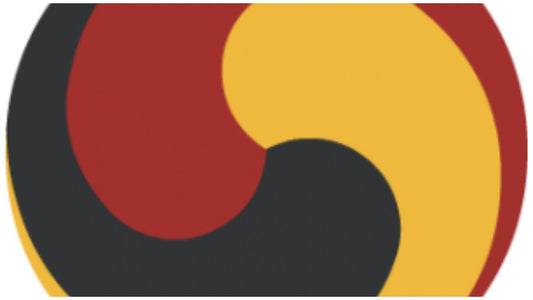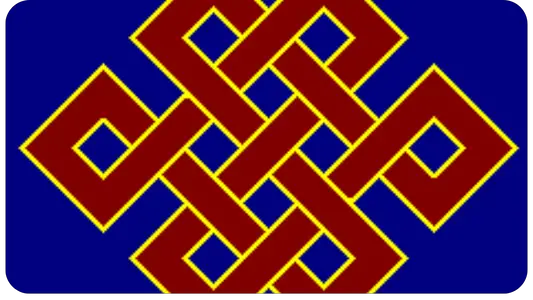Nichiren (日蓮?) (February 16, 1222-October 13, 1282) was a Buddhist monk and philosopher of the Kamakura period, who lived in 13th-century Japan.
He is the founder of Nichiren Buddhism, a branch of Japanese Buddhism, which encompasses the Nichiren Shu, Nichiren Shoshu, Soka Gakkai lay movement and other schools.
Members of Nichiren Shoshu and Soka Gakkai grant Nichiren the title of Original Buddha. While Nichiren Shu considers the original and eternal Buddha to be Shakyamuni Buddha, Nichiren is the incarnation of the Bodhisattva Jogyo (Higher Practices),45 who was entrusted by Shakyamuni Buddha to propagate the Lotus Sutra in the age of the Decline of the Dharma.
This subtle difference has an important effect on the emphasis placed on each other's teachings.
While Nichiren Shoshu and SGI preferentially study Nichiren's teachings, the Nichiren Shu order regards Nichiren's writings as subordinate documents to the Lotus Sutra and, as Nichiren himself did, the main object of study is the Sutra.
His name originally was Zennichimaro (善日麿), later Zeshō-bō Renchō (是生房蓮長) and finally Nichiren. It is generally better known as Nichiren Shōnin (日蓮聖人) or Nichiren Daishōnin (日蓮大聖人). The name Nichiren means in Japanese nichi, sun, and ren is a contraction of the word renge meaning lotus. He was a controversial figure in his time.
Birth and childhood
Nichiren was born in Japan on the sixteenth day of the second month of 1222, which is April 6 in the Gregorian calendar6 to a fishing family in the village of Tojo, Awa Province (Chiba Prefecture), at a time when social strife and natural calamities were rife, a particularly heavy burden for the most disadvantaged people of the village.
His parents were Mikuni no Taifu and Umegiku-nyo. At birth he was given the name Zenichimaro.
In 1233, at the age of eleven (twelve according to Japanese custom), Nichiren entered the Seicho-ji temple of the Tendai school (Tendaishū) to begin his first studies under the guidance of Dozembo.
Priesthood
After his entrance into Seicho-ji he was called Yakuomaro and together with Dozembo and his senior disciples, Jokembo and Guijobo he began his basic exercises. According to tradition, during this period of study he prayed to the Bodhisattwa Kokuzo asking him: "Make me the wisest man in Japan".
In the year 1237, Yakuomaro, aged fifteen (sixteen according to Japanese custom), led by his teacher Dozembo, underwent the tonsure ceremony and became a reverend under the name of Zeshobo Rencho.
In the spring of 1239, with the consent of his master, Rencho left Seicho-ji Temple for Kamakura, in order to deepen his study of Buddhism.
Establishing His Teaching
Nichiren set out on a spiritual pilgrimage in search of the truth and for twenty years visited Kamakura, Kyoto, Eizan, Onjoji, Koyassan, Shiten-no-ji and many other temples and cities in order to perfect himself.
Thanks to this pilgrimage of study, in addition to Buddhism, he studied other disciplines, such as the manuscripts of China or the Kojiki or Nihon Shoki, compendiums and manuscripts of ancient Japan. His study was wide and complete.
As a result of all these investigations, he believed he understood the essence of Buddhism and also that all the origin of human unhappiness comes from the practice of heretical and inferior religions, far from the truth.
According to his teachings, in the millennia of the Mappō era (present age), the only path to the salvation of humankind would be the establishment of the Supreme Law "of Myoho-Rengue-Kyo," hidden in the depths of the Juryo chapter of the Lotus Sutra, to which Nichiren was very devoted.
Nichiren believed that by divulging this purpose he would be persecuted and endanger his life, comparing himself to what is set forth in the Lotus Sutra.
Rencho, following the Buddhist tradition, confronted the "Three Obstacles" and "Four Demons" and decided to establish what he called "True Buddhism" to save humanity from darkness. Seicho-ji Temple was the place of the declaration.
After these pilgrimages of study in the vicinity of Kyoto, he returned to Awa, his homeland.
On April 28, 1253, at the age of 32, at Seicho-ji Temple in Awa, he proclaimed that Nam Myoho Rengue Kyo is the only True Law to be propagated during the Latter Days of the Law. This was the establishment of what he called True Buddhism.
That noon, the monk changed his name to Nichiren in the Jibutsu-do wing of the Shobutsu-bo of Seichoji Temple in front of his teacher Dozembo and a large number of people. He delivered his first sermon affirming that Nam Myoho Rengue Kyo is the ultimate entity of Buddhism as well as the Law that makes it possible to attain Buddhahood.
Facing opposition
Nichiren's announcement led to various persecutions, often violent, by the military government and established Buddhist schools.
Following his missive to the government, the "Thesis on Pacifying the Land by Propagating the Correct Teaching," many followers of the Nembutsu attempted to assassinate him at his residence. This persecution is known as the Matsubagayatsu Persecution.
For a time Nichiren stayed away from Kamakura, but later returned. Upon his return, priests of other sects, astonished by Nichiren's success in gaining followers, urged the government to banish him.
On May 12, 1262, Nichiren was exiled to the Izu peninsula, from which he could not return until he received an official pardon in January 1263. When Nichiren left Izu, he also left a considerable group of converts on the peninsula and returned to Kamakura.
In 1268, in the face of the eminent Mongol invasion, Nichiren sent eleven letters containing a synthesis of his "Theses on the Pacification of the Land through the Propagation of the Correct Teaching" to the most influential people in the Japanese government.
On September 12, 1271, armed officers of the central government arrested him, in what would become known as the Tatsunokuchi Persecution, and took him to the beach of the same name with the intention of beheading him.
And here history is mixed with myth, as according to many writings, the execution failed due to the appearance of a bright object in the night sky that terrified the officials.
Exile in Sado
The government, after failing in its attempt to behead Nichiren in Tatsunokuchi, decided to exile Nichiren to Sado Island.
He left on October 10 and arrived on Sado on October 28. On November 1, he entered Sam-Maido in Tsukahara, the place of his exile.
The Tsukahara location was a devastated cemetery (where the deceased were abandoned) with a Sam-Maido, a very small relic shrine. With almost no wood on the roof, the four walls in ruins, no food and no proper clothing, Nichiren Daishonin suffered great hardship.
The followers of the local Nembutsu, in an attempt to eliminate Nichiren, again conspired against him. It is recorded that in the midst of this critical situation, Abutsubo, who was a believer in the Nembutsu, converted along with his wife Sennichi-Ama, admiring the greatness of Nichiren's person and the legitimacy of the Law.
Bonzes of the Nembutsu, Zen and Ritsu sects organized on January 16, 1272, a religious debate with the aim of defeating Nichiren. To this end, bonzes and believers of all sects from all localities and provinces beyond Sado Island were summoned. This debate is known as the Tsukahara debate.
According to tradition favorable to Nichiren, hundreds of bonzes were present and were completely refuted by the monk. There were those who stripped off their "kesa," the Buddhist robe, or threw away their juzu or Buddhist rosary, and others who vowed never to recite the Nembutsu. It seems that from this debate, many people converted to Nichiren Buddhism.
The decree of pardon was issued by the government on February 14, 1274 and reached Sado on March 8.
Note: Scholars of Nichiren in his historical context are of the opinion that he did not attack in general all other schools but particularly the view that the most important religious leaders of those schools at that time held against the Lotus Sutra.
And that it was that stance against the Lotus Sutra that needed to be refuted, and not the practice of each school itself, since the Lotus Sutra is explicit in stating that all teachings are skillful means and therefore should be respected.
The divergence of interpretation about Nichiren's actual stance toward the other schools and traditions is possibly the main cause of the different attitudes--conciliatory or refuting--of different lineages toward each other.
Return from Exile
The Nembutsu's followers tried to prevent his return to Kamakura, but were unsuccessful. Nichiren left his place of exile on March 13 and arrived in Kamakura on March 26.
On April 8, the government ordered Nichiren to report to the authorities. On that occasion, the so-called Daishonin admonished Heino-Semon-Nojo-Yoritsuma for the third time, but the government ignored him. In the face of the government's failure to change its behavior after three warnings, Nichiren decided to retire to Mount Minobu.
On May 12, he left for his retreat, accompanied by Nikko Shonin and his disciples. On the 17th, he arrived at the mansion of Hagiri-Rokuro-Sanenaga, who offered as a gokuyo (offering) for Nichiren a piece of land at Nishi no Tai on Mount Minobu.
There, on June 17, a small hut was built where Nichiren settled until 1282. Although Mt. Minobu was located in a thick forest and was difficult to reach, he received many visits from disciples and followers from all over the country.
Despite his age (90 years old) Abutsubo went to visit several times. Shijo Kingo and Nanjo Tokimitsu also visited Minobu and received guidance from Nichiren.
The monk's teachings there were centered on the Hokkekyo (Lotus Sutra), in order to teach and guide his disciples to perpetuate the Supreme Law or Wonderful Dharma.
New persecutions
Around the time Nichiren retired to Mt. Minobu, his followers began an intensive Shakubuku (preaching) campaign in various locations. Reverends Nishu, Nichiben and Nichizen of the Ryusenji Temple in Atsuhara, who had been converted by Nikko Shonin, also became involved in propagation, converting peasants and the brothers Jinshiro, Yagoro and Yarokuro.
Bonzo Guiochi, prior of Ryusenji Temple, called upon the Daishimbo and Sam-Mibo bonzes, who had separated from Nichiren Shonin's group of laymen, for help and violently punished the Atsuhara peasants.
In this persecution, on April 8, one of the believers, Shiro was wounded, and in August Yashiro was beheaded. Then, on September 21, during the rice harvest, the peasant believers were attacked by Guiochi and his officers, and twenty peasants, including Jinshiro, were taken prisoner.
The twenty peasants were sent to Kamakura, where they were rigorously interrogated by Heino-Saemon-Nojo-Yoritsuma. The latter threatened them thus:
"If you discard your faith in the Lotus Sutra now and invoke the Nembutsu, you will immediately be pardoned and released. If you refuse to do so, however, you will face severe punishment. Think carefully before making a decision."
But, Jinshiro and the others were determined that "come what may, they would never give up the practice of faith" and resisted to the end.
As a result, on October 15, 1279, Jinshiro, Yagoro and Yarokuro were beheaded, and the other 17 peasants were exiled. Jinshiro and the others continued to recite their prayers until the time they were beheaded. This event is known as the Atsuhara Persecution.
Nichiren Daishonin, who closely observed this persecution event, in the same year, on October 12, inscribed the so-called Dai Gohonzon Sama of the Supreme Shrine, and thus realized the goal of his advent to this world at the age of 58.
On one side of the Dai Gohonzon Sama reads:
"Inscribed for the salvation of all living beings from now on and for the future, most respectfully for the petitioner of the Supreme Sanctuary of the Essential Teaching, Yashiro Kunishige, and the members of the Hokkeko-shu. On the twelfth day of the tenth month of the second year of Koan."
Death and legacy
After fulfilling the purpose of his advent to this world, namely, to inscribe the Dai Gohonzon Sama of the Supreme Shrine, Nichiren Daishonin began to feel weaker by the day. In 1282, he set out for the Hita-Chi hot springs for treatment.
Before his departure, Nichiren Daishonin wrote the "Document for Perpetuating the Law Nichiren Propagated During His Lifetime" (Minobu Sojyo-sho), which states, "I, Nichiren, transfer all the teachings I propagated during my lifetime to Byakuren Ajeri Nikku."
In this way he designated Nikko Shonin as the sole supreme supreme and leader of the propagation of so-called True Buddhism.
On September 8, Nichiren Daishonin left Mt. Minobu and on the 18th arrived at Ikegami Munenaka's mansion in Musashi Province, now the Ota district of Tokyo.
On October 13, he gathers again his disciples and exposes them the document entitled "Document of Transfer of Mount Minobu" (Ikegami Sojyo-sho), in which he designates Nikko Shonin also as Sovereign of the Law of the Minobussan Kuonji Temple.
He died surrounded by his disciples and followers, in the midst of the recitation of the Lotus Sutra and the invocation of the Daimoku at the age of 61.
His funeral and cremation took place the following day.7
His burial
In his will he left written:
"Wherever I die, kindly give me burial on Mount Minobu, where my heart always dwells."
And so it came to pass; his ashes were taken back to Minobu and treasured in a tomb under the care of the monks of present-day Nichiren Shu.
Subsequently, a portion of his ashes were moved to the temple of Taiseki-ji, home of the Nichiren Shōshū School, at the foot of Mount Fuji.
Writings
During Sado's exile, Nichiren Shonin wrote several very important Gosho (letters). Among them, in February 1272, at the age of 51, he wrote the Gosho Kaimoku-sho, where he reveals the object of veneration in terms of the person.
On April 25, 1273 he wrote the, Gosho Kanjin-no-honzon-sho, which reveals the object of veneration in terms of the Law.
Today, more than 700 of Nichiren's works are preserved, including transcripts of oral teachings, letters and even illustrations. Collectively, these writings are known as Goshos, which are available in various compilations.





